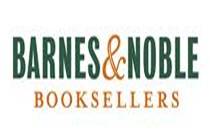Is it Groupon vs LivingSocial or Barnes & Noble vs Amazon?
Groupon has captured a lot of headlines with its lofty valuation and screaming growth. As the clear leader in the daily deal local couponing space, you expect it to be setting the stage for the industry as it did with its 50% off deal on $50 Gap gift certificates last summer. The deal which eventually sold more than 400,000 and generated over $11 million in sales cemented Groupon’s lead.
Groupon takes a Commanding Lead 
According to Hitwise Intelligence, a year ago LivingSocial had about half of Groupon’s market share. After closing the gap to within about 25% of Groupon’s share in June, usage tapered off to a startling degree while Groupon’s rocketed upward. By December, Groupon had nearly a 10x lead in market share. Then came the Amazon deal.
LivingSocial Closes the Gap
I was one of LivingSocial’s customers two weeks ago when I saw that I could get a free $10 for use on a site that I frequent. Great deal. I wasn’t alone. Over 1.3 million other people seized the coupon netting over $13 million for LivingSocial making it the largest coupon deal recorded online. Great story right? Well, it’s actually just the beginning.
Where’s the Edge?
 That single deal helped increase LivingSocial’s traffic by over 80% which brought the company’s share to within 50% of Groupon. Hitwise Intelligence’s Bill Tancer nailed this analysis right away. While LivingSocial’s traffic is expected to fall somewhat as the Amazon effect wanes, the big surge in orders and presumably new customers should have a lasting effect. The economics of the deal aren’t clear and there is some inherent conflict between a site claiming to drive local offers to physical merchants doing such a big deal for a national online store, but the risk here was worth it. The increased user list provides more potential customers for those local merchants going forward. Expect some more deals like this as LivingSocial continues to try and close the Groupon gap.
That single deal helped increase LivingSocial’s traffic by over 80% which brought the company’s share to within 50% of Groupon. Hitwise Intelligence’s Bill Tancer nailed this analysis right away. While LivingSocial’s traffic is expected to fall somewhat as the Amazon effect wanes, the big surge in orders and presumably new customers should have a lasting effect. The economics of the deal aren’t clear and there is some inherent conflict between a site claiming to drive local offers to physical merchants doing such a big deal for a national online store, but the risk here was worth it. The increased user list provides more potential customers for those local merchants going forward. Expect some more deals like this as LivingSocial continues to try and close the Groupon gap.
Is Groupon the Copycat or Barnes & Noble?
Fast forward to Friday night. I receive a special offer from Groupon. It is a second daily deal that lasts all weekend. You guessed it $10 for a $20 Barnes & Noble gift card. The obvious idea is that Groupon didn’t want to appear to be missing out and it put together its own deal with an Amazon competitor. But I doubt it. The company missing out was Barnes & Noble. Amazon is already the online Gorilla in B&N’s core market and it just juiced its activity with the LivingSocial deal.
I suspect it will come out that B&N was the instigator of the deal and not Groupon. Does that mean Groupon received more favorable economics than LivingSocial on its Amazon deal? Maybe. With that said, the lackluster adoption of the deal, only 18,000 sold in the first twenty-four hours and won’t mean a big gain or loss on the deal for Groupon. The big loser is really Barnes & Noble. Its brand doesn’t carry the same cache as Amazon and no viral stampede as a result.
As a regular Amazon customer, that deal was a no-brainer for me. It led to my first purchase on LivingSocial even though I signed up months ago. Since I don’t already shop at Barnes & Noble online, I took a pass at this weekend’s Groupon deal. A Free $10 is good, but there is friction associated with adopting a new online retailer that is not already in regular use.
Who do you think is the copycat here? Comment below
Follow me on twitter: @bretkinsella